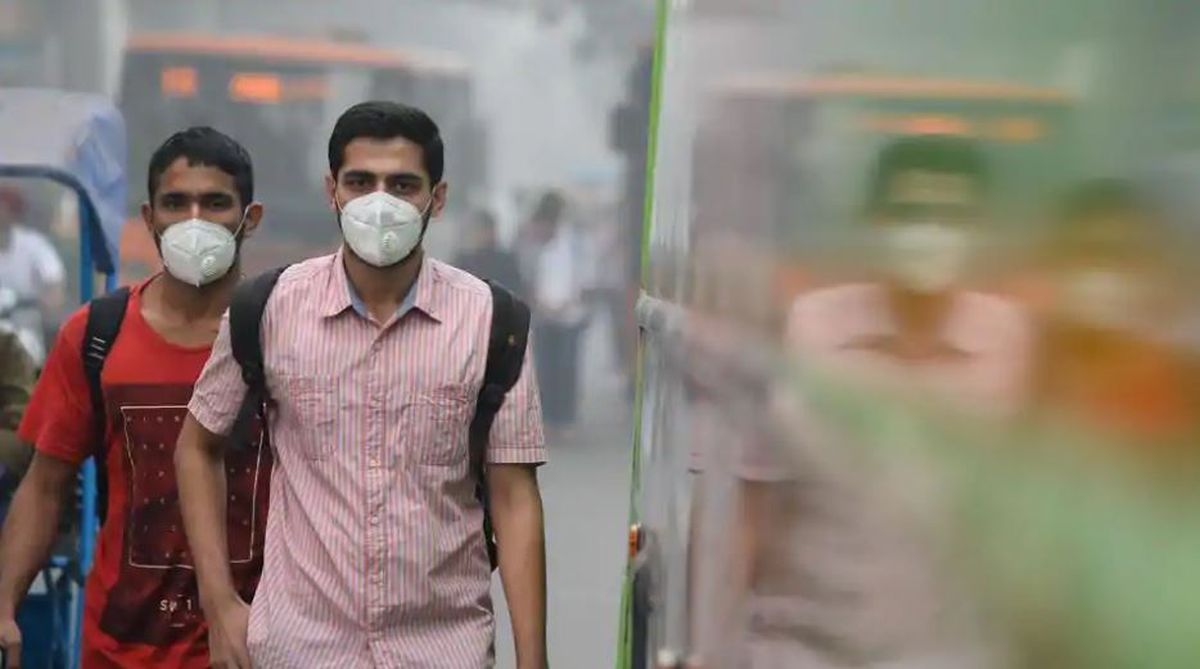Drunk riders fall off flyover in Delhi
A tragic accident occurred on Geeta Colony flyover, resulting in one fatality and another person sustaining serious injuries, police said on Sunday.
Development of Green Corridor along roads and vertical gardens on tall buildings should be taken up.

(File Photo: AFP)
The year 2019 has just come to an end leaves Delhi citizens with a number of issues to ponder over and work upon towards improvement in 2020 to make the city better and healthier in all aspects. Air Pollution in Delhi-NCR is easily amongst the top few issues that require urgent attention and due redressal. The Government of Delhi is seized of the issue and has undertaken schemes like Odd-Even as a SOS measure.
However, there is need to simultaneously undertake multiple initiatives to bring about a quick turnaround. Transportation is the largest source of air pollution in Delhi, contributing 18- 39 per cent to the city’s pollution followed by Road Dust which is the second largest source of air pollution in Delhi (18-38 per cent), followed by industries (2-29 per cent). Power plants, contribute about 3-11 per cent of Delhi’s pollution. The fifth largest source is construction (8 per cent).
Advertisement
On behalf of the Consulting Engineers Association of India and the Federation of Indian Chambers of Commerce and Industry and in my capacity as Chair and Co-Chair of their respective Infrastructure Committees, I would like to suggest a few practical workable solutions to the Government of Delhi and its Pollution Control Board, as well as the Central Pollution Control Board to tackle hazardous air pollution.
Advertisement
In order to ensure a sustainable planet for future generations, emphasis should be on cutting off pollutants at the source rather than looking at quick fix and short term solutions to tide over the situation. Tackling the air pollution menace depends not on the number of plans but in the proper implementation and monitoring of the measures adopted. Coordination between Delhi and its surrounding States is critical to forge effective and long-lasting solutions.
As mature and experienced administrators and professionals, it is time to act as catalysts to initiate priority measures including promoting ways and means of cutting down on use of fossil fuels and investing in electrical power and solar power. Keeping high-polluting vehicles away from cities, and planning and implementing their end of life is vital. Well conceived and operational public transportation systems – supporting the metro, and bus services are necessary. Better maintenance and traffic management of roads to reduce travel time is another step.
Controling air pollutant emissions from power plants by adopting tail pipe treatment technologies needs to be taken up immediately and completed on priority, say in six months’ time. Providing incentive to brick kilns for adopting zigzag technology within fixed tenure of say one year is important. Those who do not do so should be closed down. Smog towers should be installed at identified hot spots (to begin as Pilot projects).
Penalties on construction sites for not following pollution control measures must be implemented. Efficient waste management covering all waste is necessary and for this it is important to provide necessary guidance and budgets. Heavy penalties must be levied on burning of garbage. These steps should be adopted on top priority, say in next 6 to 9 months. Proper and effective control on polluting industries and assisting them with technological solutions and ensuring their implementation is vital.
To achieve this, financial assistance at low interest rates should be made available. Any industry that is found not taking taking corrective action should be closed down. It is important to promote use of technologies in agricultural sector so as to dissuade farmers from burning agricultural stubble. Users should be rewarded suitably through incentives and provided assistance in setting up compost plants, etc. All options should be exercised to explore alternates towards a win-win situation.
Development of Green Corridor along roads and vertical gardens on tall buildings should be taken up. The state should implement enhanced parking rates for graded air pollution scenario to discourage use of vehicles during critical situations. Adoption of international best practices ranging from congestion pricing to deployment of suitable and effective strategies to continually monitor and contain air pollution is vital.
Identifying and replicating Vehicle Free Zones such as Karol Bagh market area should be taken up. Data transparency would enable all elements of the society to participate in achieving environmental objectives of clean air. It is therefore important to engage the public and all stakeholders to strengthen environmental protection measures and help in achieving a cleaner and greener NCR. We are confident that implementation of these measures simultaneously and monitored for effectiveness will bring marked improvement in Delhi NCR’s Air Quality.
(The writer is Co-Chairperson, FICCI Infrstructure Committee, Chairperson, Infra Committee, Consulting Engineers Association of India (CEAI) and former Chairman, International Road Federation (IRF), Geneva)
Advertisement